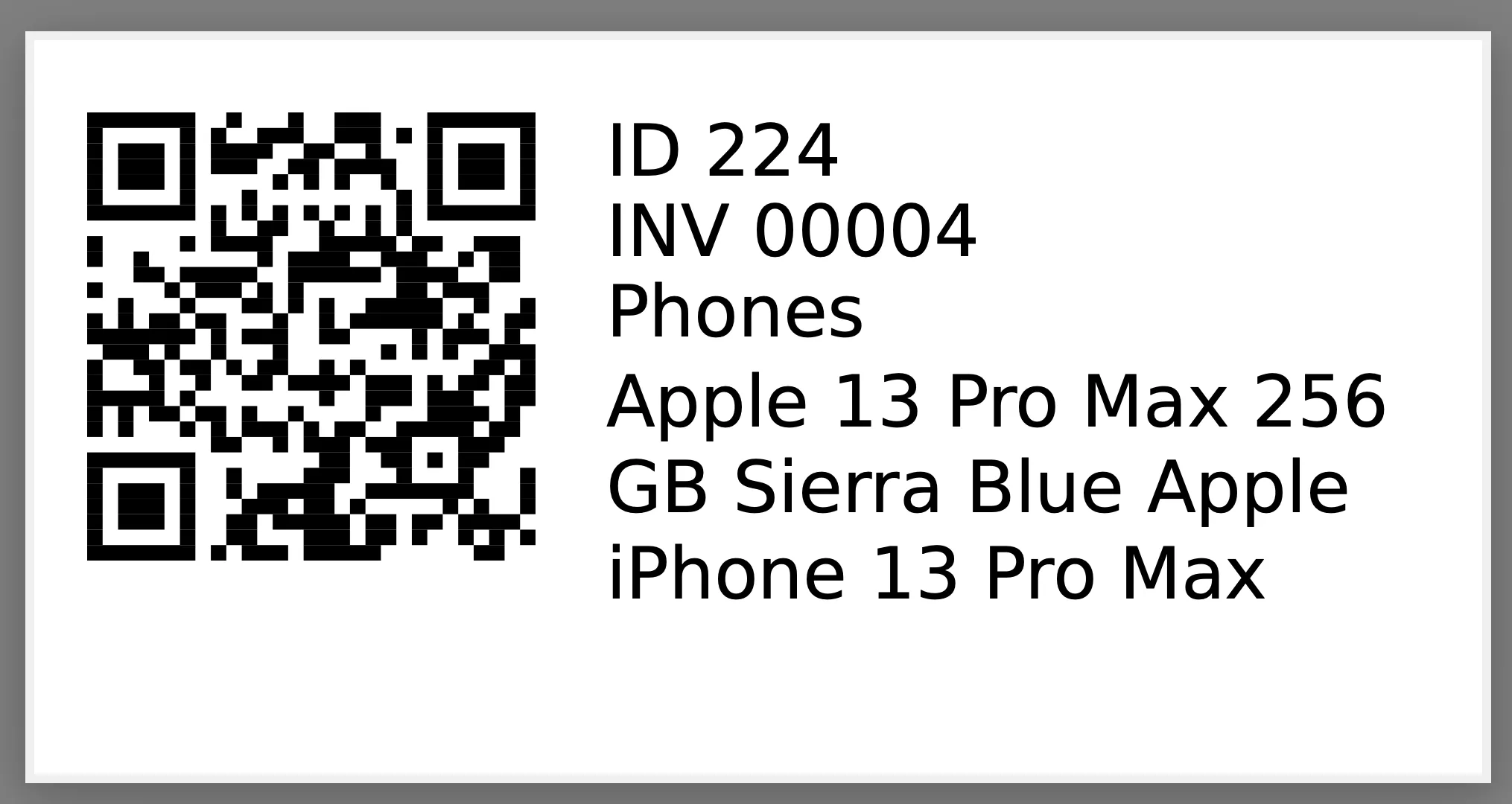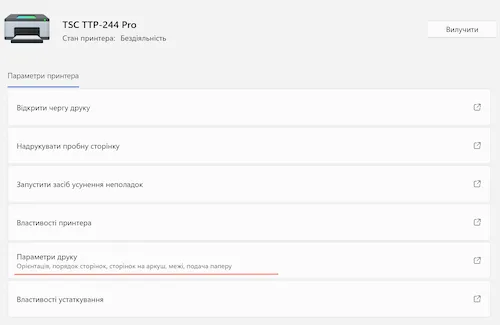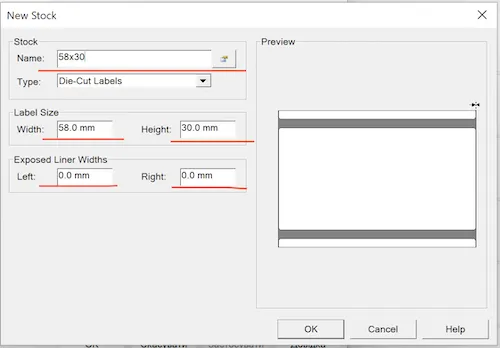Asset Tagging
Each asset in the system has a unique identifier that is retained throughout the life cycle of the asset.
The identifier consists of a sequence of letters and numbers, 38 characters in length, and is displayed as follows:
a=a407e548-e408-43a8-ab51-7bde5309fd61Using this identifier, you can generate:
- A label to mark the asset
- Store the identifier on an NFC tag, which can be attached to the asset as a sticker or keychain
The label is 58x30mm in size and contains the following information:
- Unique identifier in the form of a QR code
- Asset ID – a unique value
- Asset type
- Asset name or vendor and model

Printing the Asset Label
Section titled “Printing the Asset Label”There are two ways to print an asset label:
- Using the operating system’s print subsystem (printing on a regular printer or label printer)
- Using the label printer’s command system
It is recommended to use specialized label printers for printing labels.
To print an asset label, go to the asset’s profile and click the print button, choosing one of the options:

- 58x30mm label PDF – for printing on a regular or label printer in 58x30mm format
- A4 label PDF – for printing on a printer in A4 format
- TSC Printer – direct printing on a TSC printer using the command system
- G-Printer – direct printing on a Gainscha Gprint printer using the command system
For the first two options, a PDF document containing the label for marking will be generated. This document can be printed on any office or label printer using the operating system’s print subsystem.
When printing, make sure to check the selected printer and print settings:
- Orientation – portrait
- Paper size – 58x30mm
If the required paper size is missing, it must be configured beforehand.

For the last two options, UNIO24 will send the command system to the label printer connected via USB, using your browser.
Setting up Label Format for a Label Printer in Windows OS
Section titled “Setting up Label Format for a Label Printer in Windows OS”To configure the necessary 58x30mm format for the label printer, follow these steps:
- Go to printer settings in the operating system
- Select the label printer
- Choose Printing Preferences

- In the window that opens, create a new paper size

- Specify the paper parameters (58mm width, 30mm height). All other parameters should be 0. Name the format 58x30 and save.

- In the printer settings window, be sure to select the paper size as the default and save the settings.

Direct Printing on a Label Printer
Section titled “Direct Printing on a Label Printer”
UNIO24 supports direct printing on specialized label printers.

Currently, the WebUSB API is supported by the following browsers:

Currently, we support thermal transfer printers from TSC with TSPL/TSPL2 printer language support and from Gainscha with EPL/EPL2 printer language support.
Tested models:
- TSC TTP-244 Pro
- TSC TTP-247
- TSC TTP-345
- Gainscha Gprint 2406T
We recommend using polypropylene labels sized 58x30mm for high-quality asset labeling.
If you are using label printers from other manufacturers, we are open to discussing their integration into the UNIO24 system.
Contact us via the feedback form on our website or email us at email.
Label Printer Setup
Section titled “Label Printer Setup”If your label printer does not print Cyrillic characters, it needs to be configured or flashed.
Configuring Cyrillic Support for TSC TTP Printers
Section titled “Configuring Cyrillic Support for TSC TTP Printers”To configure Cyrillic support, set the printer’s code page to UTF-8. Use the TSC Console utility (bundled with the printer or available from the official website), connect to the printer, and follow the steps shown in the image.

Configuring Cyrillic Support for Gainscha Gprint 2406T Printers
Section titled “Configuring Cyrillic Support for Gainscha Gprint 2406T Printers”To configure Cyrillic support, you will need:
- A printer firmware update utility
- A printer service management utility
- A firmware version that supports font loading
- A Cyrillic font
Update the printer firmware to support Cyrillic font loading
Section titled “Update the printer firmware to support Cyrillic font loading”Launch the Firmware Tool v2.3.12(r).exe utility.

- Select the printer
- Read the printer information
- Select the firmware file with the .gdac extension
- Start the firmware update and wait for it to complete
Uploading Cyrillic Fonts to the Printer
Section titled “Uploading Cyrillic Fonts to the Printer”Launch the PrinterUtility v3.2.63(b).exe utility.
- Connect to the printer
- Follow the steps shown in the image
Steps 1-5 in the image are the process for uploading the font to the printer. Steps 6-8 verify the correct font upload.
